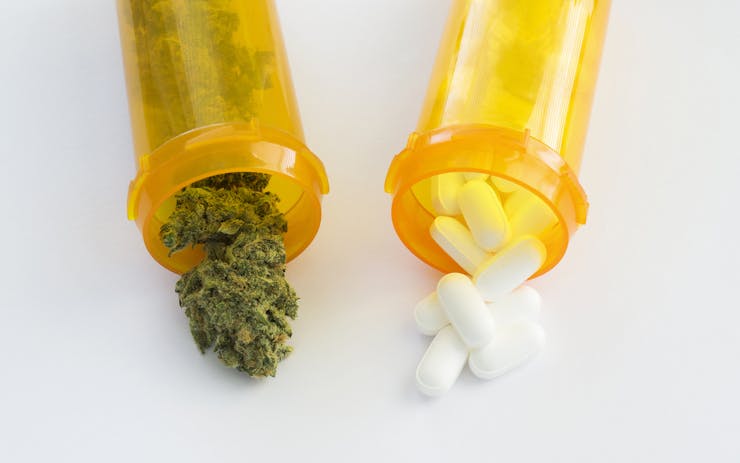In Canada, licensed dispensers dispatch neat little packets of cannabis to medicinal users all over the country for as little as $5 a gram. The packets wouldn’t look out of place in a supermarket.
In Australia, the Therapeutic Goods Administration (TGA) has a very different plan for patients accessing cannabis. The TGA is the Department of Health agency charged with regulation of therapeutic goods, from medicines to sunscreens. Until recently, the Australian government has taken a restrictive approach to creating legal access to medicinal cannabis.
But on Aug. 31, in the face of mounting demand for clinical trials and patient access, the TGA down-scheduled cannabis from Schedule 9 (Prohibited Substance) to Schedule 8 (Controlled Drug). The administration recognizes only “limited high level evidence” for the efficacy of many cannabis products, although GW Pharma’s cannabis extract nabiximols—trade name Sativex—was registered with the TGA in September 2013.
There are concerns about potential abuse and about smoking as a delivery method.
Nabiximols, a mouth spray containing CBD and THC, is used to treat symptoms of multiple sclerosis, and is one of the only cannabinoid drugs registered with the TGA. Manufactured in the UK and imported to Australia, it isn’t cheap. When Novartis Pharmaceuticals Australia applied to have nabiximols listed under the Australian Pharmaceutical Benefits Scheme in 2013, it estimated the annual cost to the PBS to be between AU$10 million and AU$30 million. (In 2011, GW Pharma signed a deal with Novartis giving Novartis exclusive commercialization rights to Sativex in Australia, Asia, the Middle East, and Africa.)
This is likely the kind of medicine the TGA has in mind when dealing with cannabis—pharmaceutical sprays or tablets provided on a strict, prescription-only basis. Front and center in its communications with the public is the Single Convention on Narcotic Drugs 1961, an international convention which requires its signatories not to allow the accumulation of drugs like cannabis in excess of domestic requirements.
But Canada is also a signatory to the convention, as are the UK and US. So what’s with the laborious, laboratory-heavy approach Down Under? The TGA cites accuracy of dosage as a concern. There may be other, unstated concerns as well—about potential abuse of cannabis or the problems with smoking as a delivery method.
The Australian Medical Association also takes a conservative view. The AMA states that cannabis should be subject to the same scrutiny and testing as any other medicine. That’s all well and good, but last year, across the Atlantic, the Journal of the American Medical Association conducted a systematic review of benefits and adverse effects of cannabis used medicinally, and found moderate-level evidence to support the use of cannabinoids for the treatment of chronic pain and spasticity.
The long road to patient access in Australia has led to serious frustration among patients who believe they would benefit from medicinal cannabis.
In practice, Australia’s slow and steady approach will likely lead to development of medicinal cannabis of a world-leading quality and efficacy. Patients accessing medicinal cannabis in Australia will have the assurance of the TGA backing the product, and their doctors will need a very clear understanding of the prescription and dosage.
These upsides are little benefit for those who need access now, however. The burdensome regulatory framework and incredibly stringent manufacturing standards are likely to make any Australian-manufactured products very expensive.
While patients deserve access to high-quality, accurately dosed medicine, the TGA and the federal government should continue to review and develop their approach to the promising medical uses of cannabis. Hopefully the numerous clinical trials being conducted around the country will provide a clearer and more comprehensive picture of cannabis’ efficacy and risks, backed by homegrown research.





